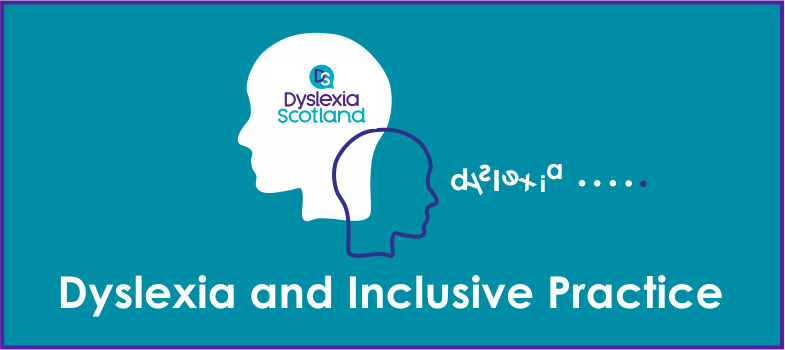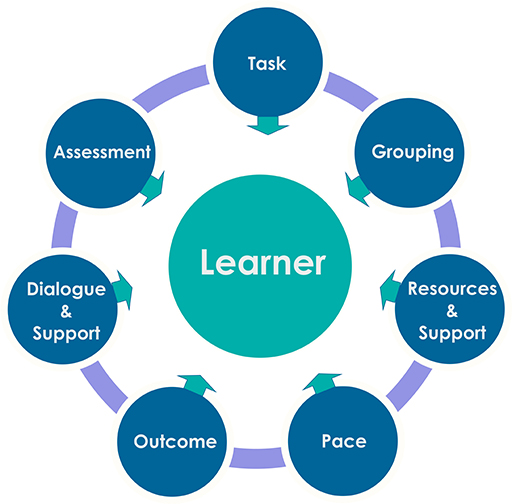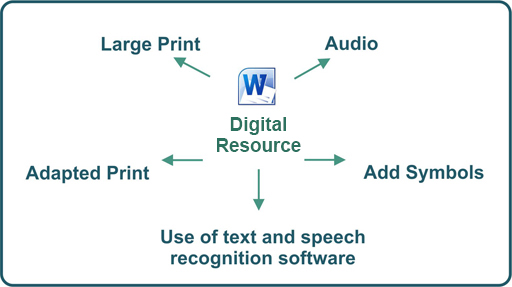4.3. Differentiation
Module 1, Section 2.1 recap
Differentiation is defined by the Training and Development agency for Schools as:
‘the process by which differences between learners are accommodated so that all students in a group have the best possible chance of learning’.
The impact of dyslexia as a barrier to learning varies in degree according to the learning and teaching environment. To ensure learners can access the curriculum and engage with the learning and teaching, staff will need to make adaptations and differentiate their approaches and resources and this may happen in a number of ways. Expert opinion varies regarding the agreement on the definitive methods and approaches to support differentiation within learning and teaching; for example, Kormos and Smith (2012) highlight that effective differentiation can be achieved by considering four dimensions: materials, task, expectation and support. (Teaching Languages to Students with Specific Learning Difficulties: 2012) and others focus on task, support and outcome.
Figure 26 highlights different approaches to consider when planning effective and meaningful differentiation.
Activity 31
There are several approaches to consider when planning effective and meaningful differentiation. The table highlights effective areas of differentiation. Before you click on the answer to reveal the focus area, consider what you may think the answer could be. Do note that the list is not exhaustive.
| Differentiation by: | Areas of focus for differentiation |
Task
| |
Grouping
| |
Resources/support
| |
Pace
| |
Outcome
| |
Dialogue and support
| |
| Assessment |
Answer
| Differentiation by: | Areas of focus for differentiation |
Task
|
|
Grouping
|
|
Resources /Support
|
|
Pace
| Consideration of flexibility of teaching pace and time allowed for tasks and individual pupil requirements, supporting both able learners and those who require more time. |
Outcome
| All students undertake the same task but a variety of results are expected and are acceptable. |
Dialogue and support
|
|
| Assessment |
|
The availability and access to IT has changed the development and production of learning and teaching resources in an extremely positive way. All teachers have access to computers and create the majority of resources on a word document, which can be converted very easily into a range of differentiated and accessible resources as highlighted in figure 27.
Staff must consider ways to remove any unnecessary barriers learners experience when accessing digital resources. This includes:
- Digital poverty
- Use of language - ensuring that the language used to describe what is expected of learners is accessible.
- The amount of support required to ensure fairness and provide sufficient challenge
- Support to learners and families to access the digital resources.
Practice is most effective where teachers use a range of learning, teaching and assessment approaches flexibly to identify strengths, learning needs and appropriate support for vulnerable, disengaged and hard-to-reach learners.
Select here [Tip: hold Ctrl and click a link to open it in a new tab. (Hide tip)] to access information and resources on the Addressing Dyslexia Toolkit to support differentiation and accessibility.
Activity 32 Reflective task
In your Reflective Log, consider your practice and what types of differentiation you have provided, or are currently providing, for your learners. This activity can be used to focus on a whole class, small groups or individual learners.
4.2. Developing an inclusive curriculum to support effective learning and teaching



